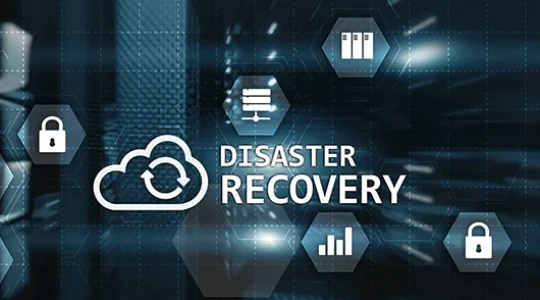The pressure for continuous availability and immediate scalability has never been higher. Digital transformation has accelerated the adoption of modern architectures but has also exposed the fragility of systems in the face of demand spikes and occasional failures. Companies need resilience in their infrastructure, meaning the ability to maintain operations even in the face of failures, attacks, or unexpected changes in the environment.
In this context, the union between microservices and DevOps consolidates as the foundation for highly available, adaptable, and efficient infrastructures. But how exactly does this combination offer such a powerful framework? This is what we will explore in this article.
What are microservices?
Microservices are an architectural approach that divides an application into small, independent, and specialized components. Unlike monolithic systems, which concentrate all logic into a single block, microservices break down the application into smaller units, each responsible for a specific function.
Characteristics of microservices:
- Independent services that can be deployed separately
- Communication via lightweight APIs, usually HTTP/REST or gRP
- Database per service, avoiding centralized dependencies
- Focus on single responsibility, promoting cohesion and clarity
- Modular development, with autonomy for teams
Practical examples:
Imagine an e-commerce system. In a microservices architecture, the payment system, product catalog, and shopping cart operate as independent services. Thus, a failure in payment does not bring down the entire site, just the affected service.
How microservices contribute to infrastructure resilience
Resilience is the ability of a system to resist, adapt, and recover from failures. Microservices are naturally resilient by design.
1. Fault isolation
With decoupled services, a failure in one part of the system does not propagate. The rest of the application continues functioning, which:
- Reduces the impact on end users
- Facilitates diagnosis and fixing of the problem
- Allows safe and controlled deployments
2. Rapid scalability and auto-scaling
Each service can be scaled individually based on its needs. For example:
- An authentication service can be scaled to handle a large volume of logins
- The reporting service can operate with fewer instances outside of business hours
Tools like Kubernetes and cloud solutions like AWS Auto Scaling or Azure Autoscale allow dynamic adjustment of infrastructure according to traffic and resource usage.
3. Technological flexibility
Microservices eliminate "lock-in" to a specific technology. Each service can be written in the most suitable language for its purpose. This allows:
- Use of NoSQL databases for non-relational data
- Selection of specific languages (e.g., Go for performance, Python for AI)
- Updates and tests with lower risk, as changes to one service do not affect the others
How DevOps supports the efficient management of microservices
Managing dozens or hundreds of autonomous services requires automation, visibility, and collaboration, considered the pillars of DevOps. This culture, combined with specific tools, is essential for maintaining order in the microservices ecosystem.
Continuous integration and continuous delivery (CI/CD)
CI/CD is the engine of agility. Automated pipelines ensure that:
- Each commit is automatically tested
- Services can be deployed independently
- Rollbacks are quick in case of failures
A typical CI/CD flow with microservices might involve:
- Builds in Docker containers
- Automated contract and integration tests
- Canary deployments to validate changes in production in a controlled manner
Tools like GitHub Actions, CircleCI, ArgoCD and Spinnaker are widely used for this.
Monitoring and automatic recovery
High availability depends on observability. DevOps incorporates tools that monitor the health, performance, and logs of microservices in real-time.
By combining:
- Prometheus for metrics
- Grafana for dashboards
- ELK/EFK Stack for logs
- AlertManager and PagerDuty for incidents
It is possible to configure automatic actions such as restarting failed pods, redirecting traffic, and even creating additional instances during traffic spikes.
Collaboration between teams
The DevOps culture brings together developers, SREs, and operators with a common goal: continuous delivery with quality. In microservices environments, this translates to:
- Shared responsibility for the lifecycle of services
- Small, cross-functional teams with end-to-end ownership
- Autonomy for on-demand deployments, with standardized governance
This model allows not only the infrastructure to scale but also the engineering teams.
Best practices for efficiently implementing microservices and DevOps
Implementing microservices with the support of the DevOps culture requires more than just the adoption of tools. It is essential to follow best practices that ensure operational efficiency, controlled scalability and security in distributed environments. Below are the key points of attention for successful adoption.
- Use containers (such as Docker) to encapsulate services
- Adopt Kubernetes as an orchestrator to manage services, scale automatically, and ensure high availability
- Establish communication standards between services (such as REST APIs or events via Kafka)
- Implement contract tests to avoid changes in one service breaking others
- Maintain observability from the start, with metrics, structured logs, and distributed tracing
- Implement circuit breakers with tools like Istio or Hystrix to handle failures in a controlled manner
Cost reduction and operational efficiency
The adoption of microservices combined with DevOps practices brings significant gains in cost reduction and operational efficiency. This happens because downtime is minimized thanks to fault isolation and automatic recovery, while intelligent resource usage, through auto-scaling, avoids waste and optimizes infrastructure.
Moreover, the automation of tests and deployments reduces manual effort, speeds up the delivery of new features and improves team productivity. The result is a more agile, resilient, and economical environment, with better performance for both users and the business.
The union of microservices and DevOps creates an adaptable, robust, and modern infrastructure. Auto-scaling allows systems to grow efficiently. Fault isolation ensures continuity. And DevOps provides the control and automation needed to orchestrate this complexity smoothly.
If your company is ready to adopt microservices and DevOps to improve the resilience and efficiency of its infrastructure, Prime DB Solutions can help. With a specialized team and customized solutions, we offer consulting and implementation of microservices, process automation, and continuous integration, ensuring that your infrastructure is scalable, agile and efficient.


